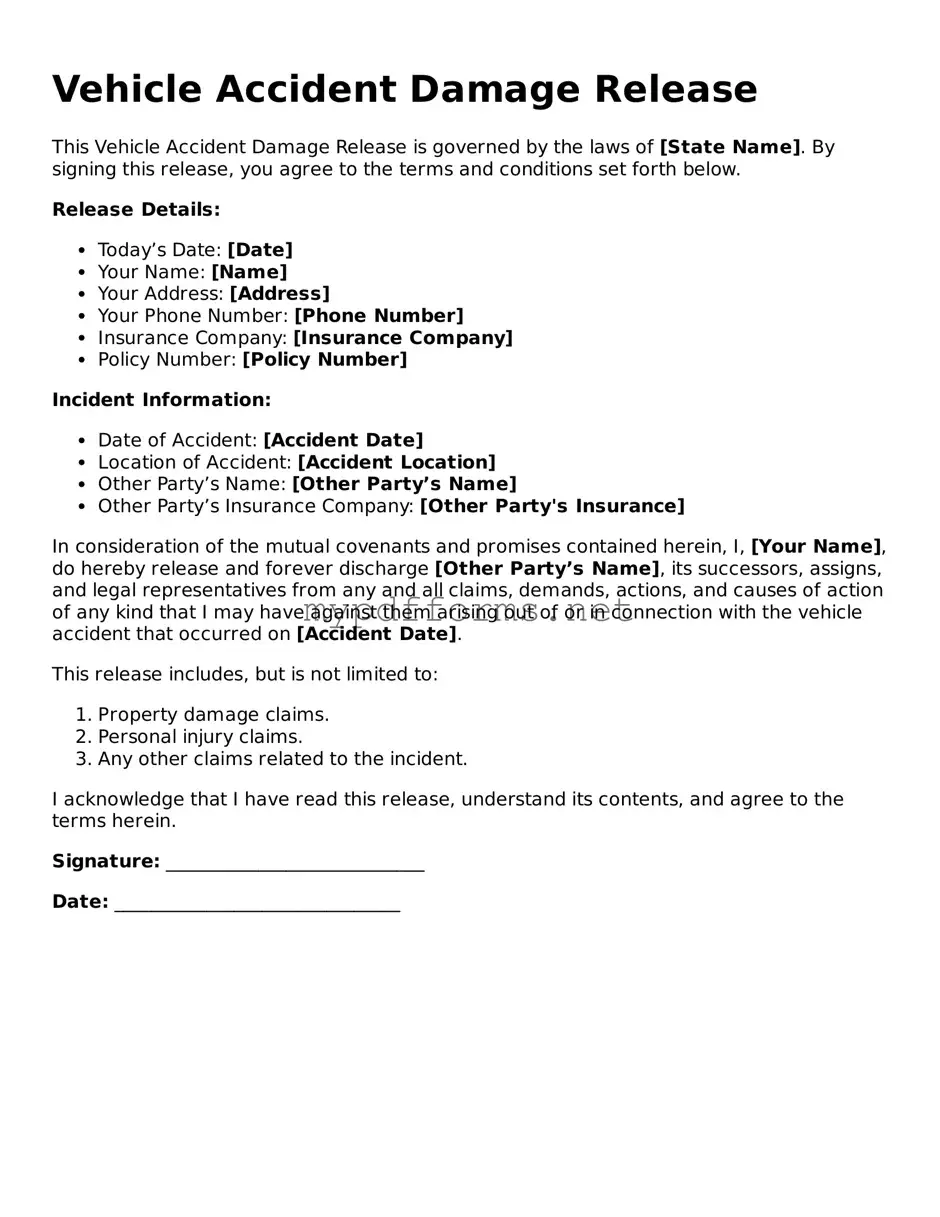The Vehicle Accident Damage Release form is similar to the General Release form. Both documents serve to release one party from liability for damages. In a General Release, the individual agrees not to pursue any further claims against another party, typically in exchange for compensation. This is often used in various legal contexts, not just vehicle accidents, to ensure that all potential claims are settled and closed.
Another document akin to the Vehicle Accident Damage Release is the Liability Waiver. A Liability Waiver is often used in recreational activities or events, where participants acknowledge the risks involved and agree not to hold the organizers responsible for any injuries. Like the Damage Release form, it aims to protect one party from future claims related to incidents that may occur.
The Settlement Agreement is also similar in nature. This document outlines the terms of a settlement between two parties, often after a dispute or accident. It typically includes a release of liability, ensuring that once the agreement is signed, neither party can pursue further claims related to the incident. The Settlement Agreement formalizes the resolution and provides clarity on the terms agreed upon.
A Confidentiality Agreement shares similarities with the Vehicle Accident Damage Release form in that it restricts one party from disclosing certain information. While the Damage Release focuses on liability, the Confidentiality Agreement protects sensitive information exchanged during negotiations or settlements. Both documents aim to create a clear understanding of obligations and limitations between parties.
The Indemnity Agreement also parallels the Vehicle Accident Damage Release. An Indemnity Agreement involves one party agreeing to compensate another for certain damages or losses. This document is often used in contracts to allocate risk and responsibility. Like the Damage Release, it seeks to protect one party from financial repercussions arising from specific actions or events.
In addition to the various legal forms mentioned, understanding the importance of the Vehicle Release of Liability is crucial for anyone involved in the sale of a vehicle. By utilizing this form, sellers can ensure that they are protected from any future claims or liabilities once the ownership has been transferred. Proper documentation not only facilitates a smoother transaction but also safeguards all parties involved from potential disputes. For further information on this essential document, visit https://topformsonline.com/vehicle-release-of-liability.
Lastly, the Hold Harmless Agreement is similar as well. This document is designed to protect one party from legal liability for actions taken by another party. In a Hold Harmless Agreement, one party agrees not to sue the other for any injuries or damages that may occur. It serves a similar purpose as the Vehicle Accident Damage Release by limiting exposure to liability and ensuring that both parties understand their responsibilities.
